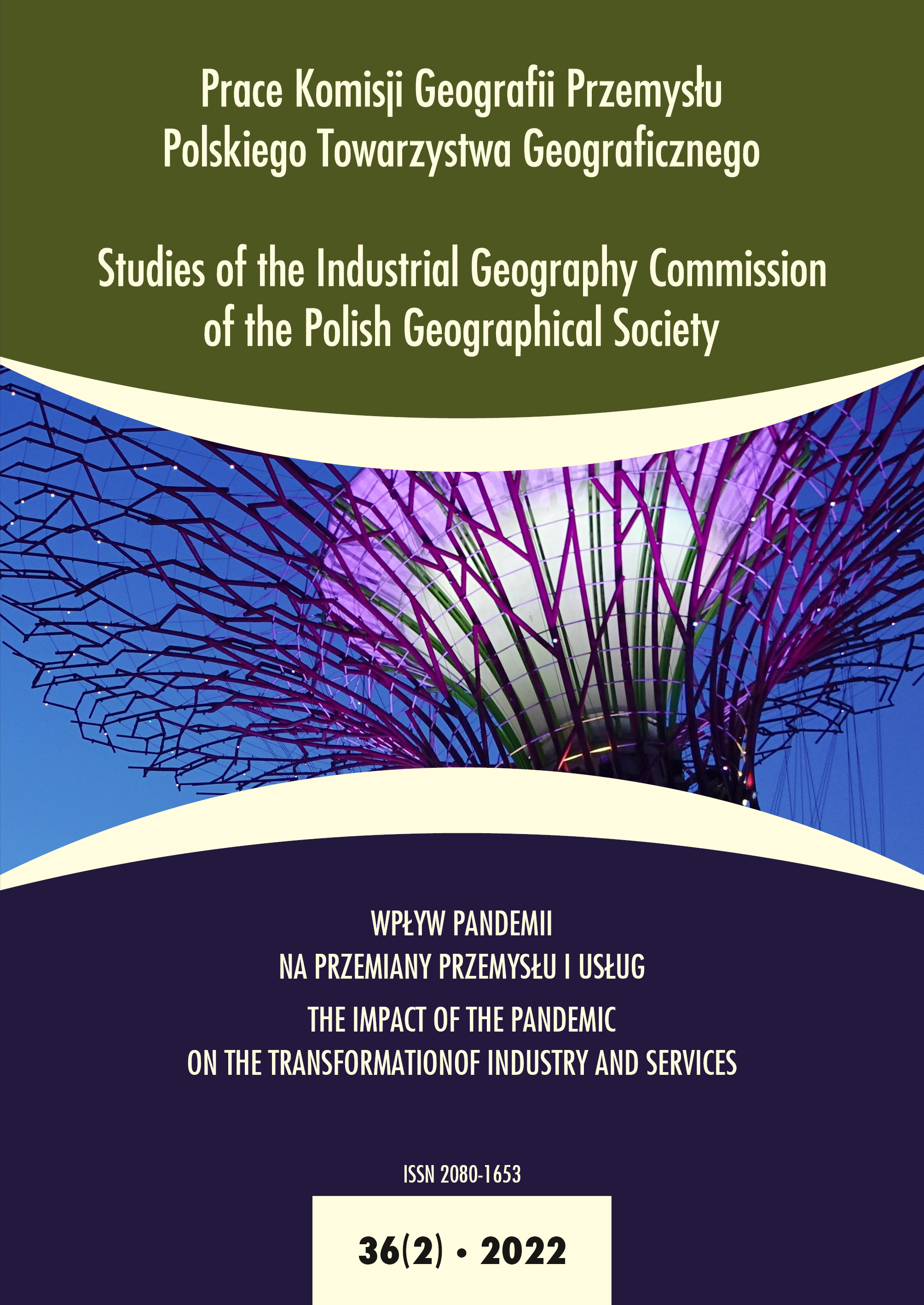Solutions of fourth industrial revolution as a condition for further development of industrial production in EU in the context of the COVID-19 pandemic
DOI:
https://doi.org/10.24917/20801653.362.4Keywords:
COVID-19, digitalisation, Industry 4.0, new normal, technologyAbstract
The spread of SARS-CoV-2 around the world has turned into an economic shock, affecting both the supply of goods and services, as well as the demand for consumption and investments. The challenges that enterprises most often faced were the low flexibility of global value chains to demand and supply disruptions, delays in completing exports orders and limitations in economic activity. The pandemic highlighted weaknesses related to the diversification of supply sources, as well as the concentration of production of certain goods. The aim of the paper is to present a summary of the main problems that affected the industrial production of European Union countries in short-term and the challenges for the European industry in long-term perspective, as well as solutions resulting from the fourth industrial revolution. The thesis adopted in this paper is that the experiences of enterprises related to the crisis caused by the pandemic will motivate them to implement new technologies. There is no guarantee that we will return to the pre-pandemic world. Therefore, transformation is not only a temporary means of coping with the crisis, but also a permanent solution for the development of EU industry.
Downloads
Metrics
References
Adamik, A. (2019). Creating a Competitive Advantage in the Age of Industry 4.0. Problemy Zarządzania, 17, 2, 13–31. doi: https://doi.org/10.7172/1644–9584.82.1
Bajczak, R., Popławski, K. (2019). Industry 4.0, Germany’s New Industrial Policy. Warszawa: Ośrodek Studiów Wschodnich
Bendkowski, J. (2017). Zmiany w pracy produkcyjnej w perspektywie koncepcji „Przemysł 4.0”. Zeszyty Naukowe Politechniki Śląskiej, seria: Organizacja i Zarządzanie, 112, 21–33.
Brettel, M., Friederichsen, N., Keller, M., Rosenberg, M. (2014). How Virtualization, Decentralization and Network Building Change the Manufacturing Landscape. International Journal of Information and Communication Engineering, 8, 37–44.
Dalenogare, L., Ayala, N.F., Benitez, G.B., Frank, A.G. (2018). The expected contribution of Industry 4.0 technologies for industrial performance. International Journal of Production Economics, 204, 383–394. doi: https://doi.org/10.1016/j.ijpe.2018.08.019
Eurostat, (2021, 14 listopada). Production in industry – monthly data. Pozyskano z https://appsso.eurostat.ec.europa.eu/nui/show.do?dataset=sts_inpr_m&lang=en
Gu, S., Yang F. (2021). Industry 4.0, a revolution that requires technology and national strategies. Complex & Intelligent Systems, 7, 1331–1325.
Kagermann, H., Wahlster, W., Helbig, J. (2013). Recommendations for implementing the strategic initiative INDUSTRIE 4.0: Final report of the Industrie 4.0. Working Group.
Kane, G.C., Palmer, D., Phillips, A., Kiron D., Buckley, N. (2018). Coming of Age Digitally. MIT Sloan
Management Review and Deloitte Insights, 59, 1–10.
Komisja Europejska. (2021, 19 listopada). DESI Index. Pozyskano z https://digital‑agenda‑data.eu/datasets/desi/visualizations
Komisja Europejska. (2020). A New Industrial Strategy for Europe. Bruksela
Komisja Europejska. (2021, 5 marca). How digitalized are EU’senterprises? Pozyskano z https://ec.europa.eu/eurostat/web/products‑eurostat‑news/-/ddn-20211029-1
Delévacque, G. (2021, 20 listopada). Covid-19 les solutions de lindustrie 40 pour mieux rebondir. Pozyskano z https://www.lemagit.fr/tribune/Covid-19-les‑solutions‑de‑lindustrie-40pour‑mieux‑rebondir
Michałowski, B., Jerzynowski, M., Pacek, P. (2018). Szanse i Wyzwania polskiego Przemysłu 4.0. Warszawa: Agencja Rozwoju Przemysłu.
Montanino, A., Del Giovane, C., Carriero, A. (2021). Strategic Value Chains Towards a Resilient and Sustainable Post‑Pandemic Recovery. Brussels: Centre for European Policy Studies.
Nawracaj‑Grygiel, K., Ulbrych, M. (2021). Gotowość polskiego sektora przemysłowego do wdrożenia Przemysłu 4.0. W: J. Bukowska, M. Lament (red.), Gospodarka XXI wieku. Wyzwania sektorowe. Warszawa: CeDeWu, 309–325.
Pisz, I. (2021). Impact COVID-19 pandemic on implementation Industry 4.0 in enterprises and supply chains. Zeszyty Naukowe. Organizacja i Zarządzanie, Wydawnictwo Politechniki Śląskiej, 150, 183–198. doi: https://doi.org/10.29119/1641–3466.2021.150.14
Policy Department for Economic, Scientific and Quality of Life Policies Directorate‑General for Internal Policies, (2021). Impacts of COVID-19 pandemic on EU industries. Parlament Europejski.
Policy Department for External Relations. (2021). Post Covid-19 value chains: options for reshoring production back to Europe in a globalised economy. Parlament Europejski.
Polski Instytut Ekonomiczny. (2021). Globalizacja w czasie pandemii. Warszawa.
Roland Berger Institute. (2021, 19 listopada). Industry 4.0 The‑importance of an overarching digitalization strategy. Pozyskano z https://www.rolandberger.com/en/Insights/Publications/Industry-4.0-The‑importance‑of‑an‑overarching‑digitalization‑strategy.html
Światowe Forum Ekonomiczne. (2022, 5 marca). The Fourth Industrial Revolution: what it means, how to respond. Pozyskano z https://www.weforum.org/agenda/2016/01/the‑fourth‑industrial‑revolution‑what‑it‑means‑and‑how‑to‑respond/
Downloads
Published
How to Cite
Issue
Section
License
Copyright (c) 2022 Studies of the Industrial Geography Commission of the Polish Geographical Society

This work is licensed under a Creative Commons Attribution-NoDerivatives 4.0 International License.
Articles are published under the terms of the Creative Commons License (CC BY-ND 4.0; Attribution– NoDerivs).

